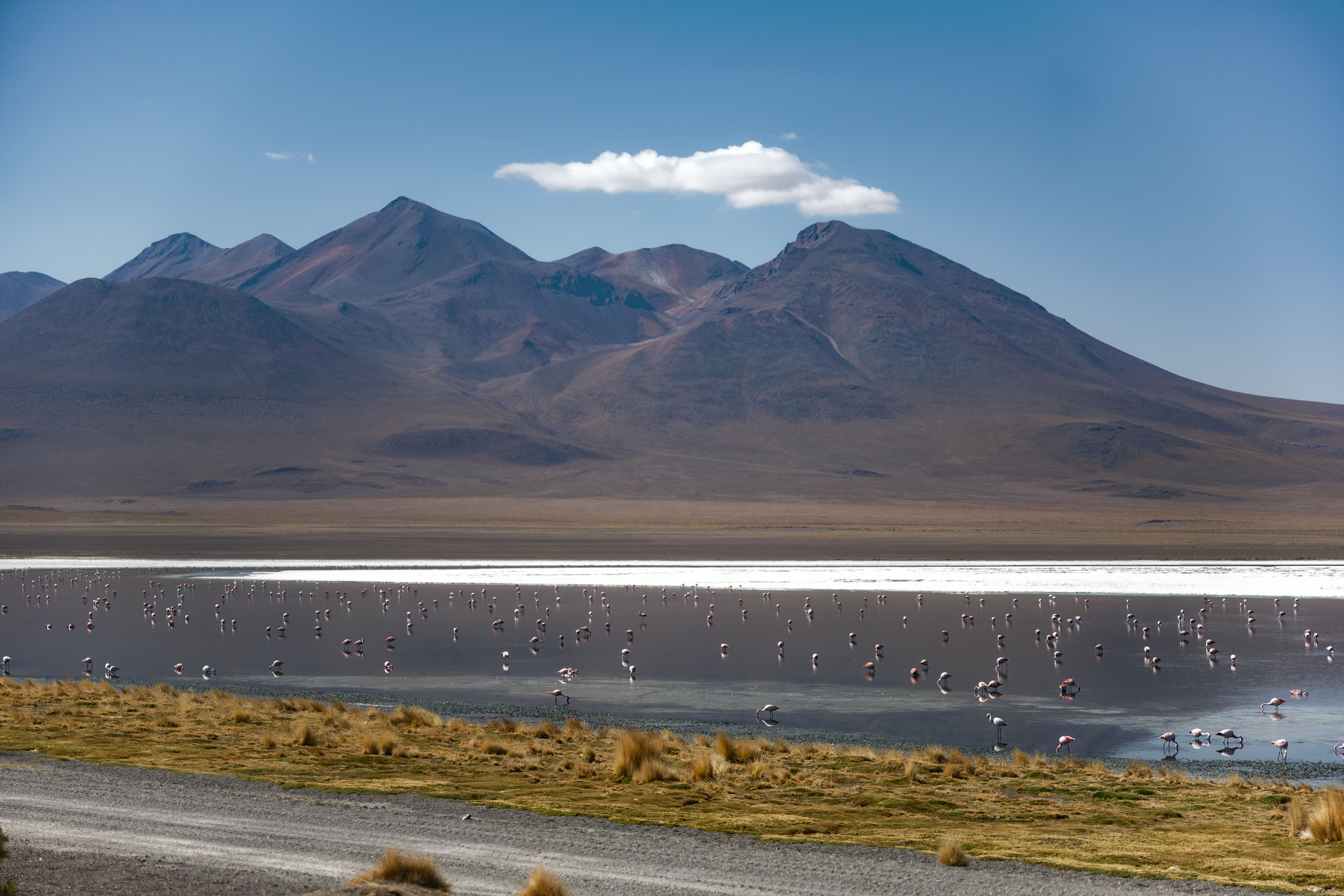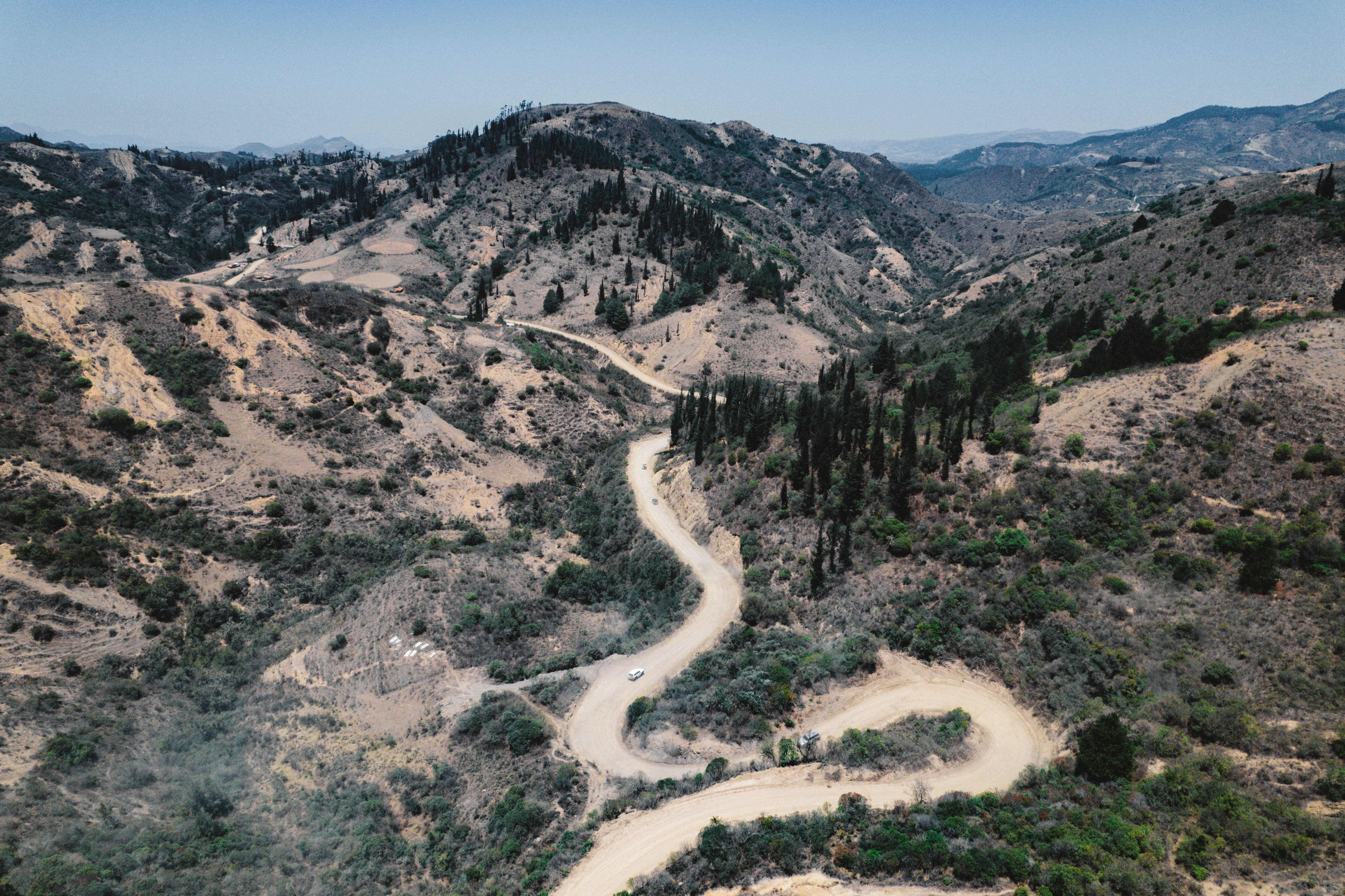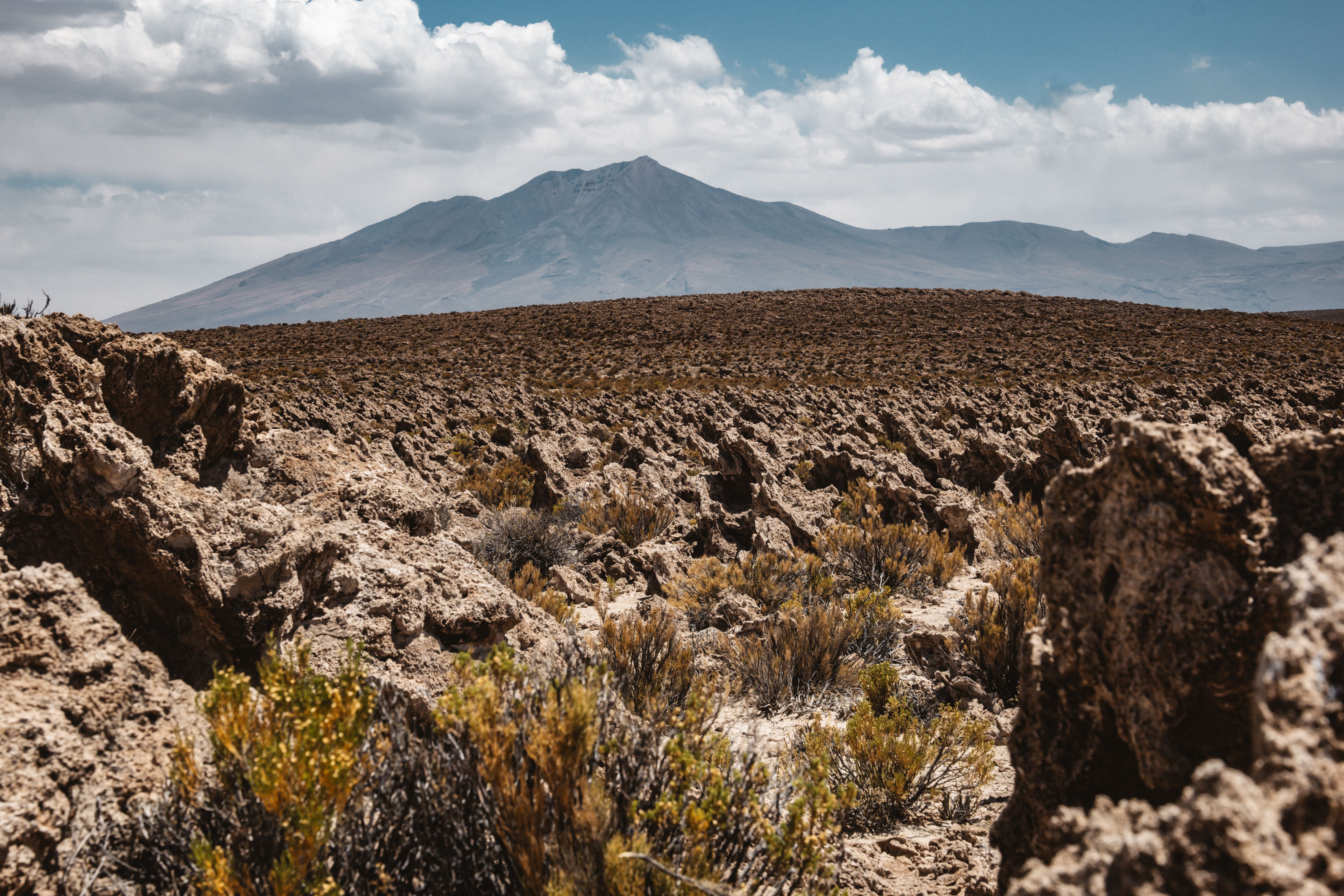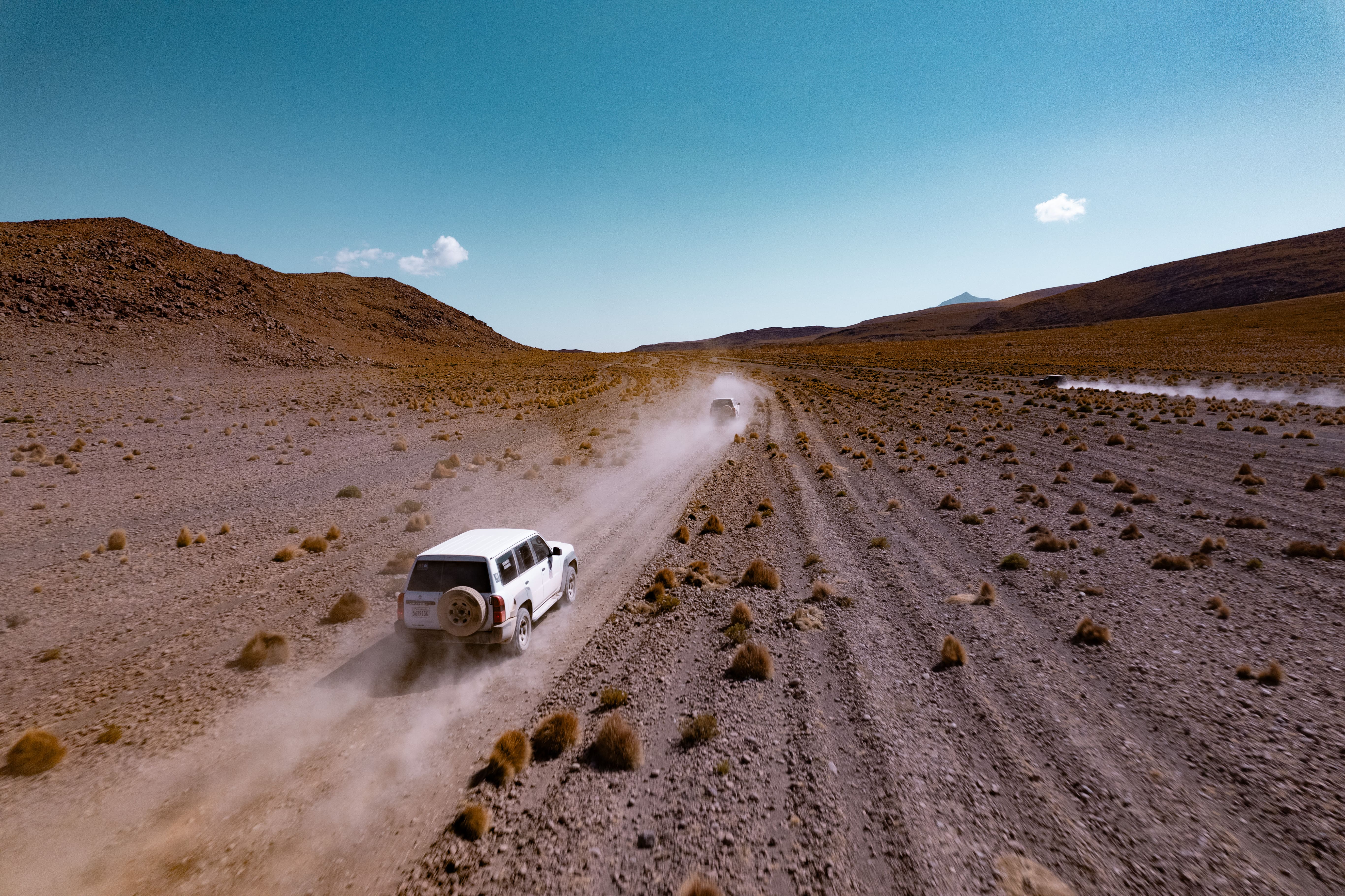
Why You Might Find More Wonder on Earth Than in Space
Is it space we’re after, or a certain feeling? Nomadic Road writer Tarang Mohnot looks at what leisure space travel promises, and how the Earth quietly delivers much of the same.
In 2024, I spent a month journeying across Ladakh, deep in the high-altitude reaches of the Himalayas. Every day left me flabbergasted. There were multi-hued mountains with bizarre textures. Large boulders scattered across miles, dwarfed by even larger mountains. Sand dunes at 3,000 meters above sea level, alongside what looked like a beach—utterly misplaced, yet defiantly there.
Ladakh felt otherworldly. But it was, unmistakably, part of planet Earth. I didn’t arrive there in a spacecraft, but on winding, broken roads, on a motorcycle.

Places like these lie scattered across our colourful, multi-personality planet—alien in appearance, but deeply grounded in earthly experience. In Australia’s Lake Hillier, the water glows bubblegum pink. In Bolivia, the world’s largest salt flat becomes a vast, seamless mirror during the rains. In Namibia’s Deadvlei, skeleton trees rise from a clay pan. And in Iceland, volcanoes steam beside fields of ice. Many of the most breathtaking places on Earth are paradoxes, really.
Still, humans yearn to go further.
The Pull of the Unknown Runs Deep
Throughout history, human beings have looked beyond the horizon: to sail across oceans once thought to be the end of the world, to descend into pitch-black ocean trenches, and eventually, to set foot on the Moon. It’s only natural, then, that our collective gaze has drifted upward yet again. Today, that desire manifests in a rising hunger for space travel not just by astronauts, but by civilians.
Once the stuff of science fiction, space travel is now a real, booming industry. In 2024, the commercial space tourism market was valued at $1.3 billion, and it's expected to soar to nearly $7 billion by 2030. Companies like Blue Origin, SpaceX, and Virgin Galactic have made it possible for civilians—mostly ultra-wealthy ones for now—to experience weightlessness, look back at Earth from low orbit, or even contemplate future life beyond our atmosphere. Space exploration helps us track planetary threats, explore the possibility of relocation in the face of climate change, and even offers health insights.
But when it’s leisure space travel in question, I can't help but wonder: is it truly the alien we’re chasing, or a certain feeling? And must we leave Earth to find it?
Why We Romanticise the Great Beyond
We imagine space as vast and silent. Somewhere so removed from our daily lives that simply being there would shift something inside us.

It's no surprise, then, that those who’ve been there describe it with reverence. Dennis Tito, the world’s first space tourist, called his eight-day journey in orbit “the greatest experience of my life”—a state of euphoria that far exceeded expectation. He speaks of the newness of weightlessness, which brought him more joy than motion sickness.
Richard Garriott, another private space traveller, spoke of launch as “a confident ballet move,” and later described the moment he saw Earth from space as transformative: “The Earth changes scale. It goes from being infinite in your mind’s eye to now... not only finite, but frankly pretty damn small.”
I can’t even imagine what that must’ve felt like for Tito and Garriott.
Or maybe, I can.
Because while I may not have millions of dollars to spend on a trip beyond the stratosphere, I do call myself a traveller; a pretty rough, avid, and passionate one at that.
I’ve found that those sensations—the elusive, transcendent feelings—aren’t exclusive to the vacuum of space. They exist, quietly, in the forgotten corners of Earth.
The Unknown Is Closer Than You Think
You don’t need to leave Earth to feel as though you’ve left your world behind. Anyone who’s been on a Nomadic Road expedition would likely attest to this truth. In Mongolia, travellers meet nomads who still live in traditional gers and hunt with eagles. In remote travel destinations like the Kalahari, you might go days without encountering another human, yet wildlife thrives in abundance.
Humans also chase mystery. That’s partly what makes space feel sacred, even to those who’ve never left Earth. But again, mystery isn’t exclusive to outer space.
Nomadic Road’s bespoke 4x4 adventures are crafted to unseat your assumptions. Mountains can be purple. Salt flats stretch out beneath volcanoes. Hailstorms erupt in the middle of a sun-baked desert. In Argentina, turquoise lakes gleam beneath jagged rock formations. In Mongolia, hot springs bubble defiantly in subzero temperatures. In Bolivia, the surreal Laguna Colorada glows red—so red, it hardly feels like Earth at all.
Next year, in Ecuador, Nomadic Road will journey to a place that brings us closer to the cosmos, quite literally. Mount Chimborazo, thanks to Earth’s equatorial bulge, is the closest point on Earth to the Moon. Its summit has less gravity than anywhere else on the planet. From space, it appears even taller than Everest. The Earth can absolutely warp our expectations of distance and scale.
Touch, Scent, Sound—This Is Earth
I remember the first time I climbed boulders in the great outdoors. The adrenaline and fear were undeniably addictive. But what I loved most about the process was the feel of the rock under my fingers. The textures, the small variations, the sense that I was directly connected to something much older than me. It grounded me.

So many of my most vivid memories are of this kind: immersive travel experiences that are sensory, physical, elemental. I think back to dipping my feet in an icy stream high up in the Himalayas. I can recall countless memories brushing my hands over alien-looking leaves in faraway forests.
And I’m not alone in this. On a recent Kalahari expedition, one of our travellers, Jas, described one of her most memorable moments: “Listening to birds, insects, and the sounds of nature while tenting on top of a car, in the middle of the night, in the middle of nowhere, was one of the nicest experiences for me.”
While on the winter Mongolia expedition earlier this year, Venky sent me a voicenote describing a small detail that stuck with him: “You could smell the wood,” he said. “Because all the kitchens and rooms were made of traditional wood.” He was talking about a remote lodge tucked deep in the Mongolian wilderness.
In Peru, travellers speak of the rugged beauty of the Andes not just in visuals, but in scent: wildflowers and native herbs mingling in the crisp mountain air. By contrast, I’d imagine space to be sealed off. Quiet. Distant. Outside the protection of a suit or spacecraft, you can’t touch the world directly. You can’t meet it the way you do here on Earth. So much of it must feel... intangible. Removed from the senses.
It’s hard to picture a place like that.
Wonder Has Been Here All Along
Again, maybe space does hold experiences we haven’t yet imagined. But I can’t help feeling that we often overlook what’s already within reach.
So yes, by all means, look up. But also: look around. There are forests you’ve never stepped into, deserts you’ve never seen in bloom, mountains that shift colour with the light. There are people living lives you’ve never imagined, and terrains that feel more Martian than anything NASA’s sent back.
Maybe those of us who’ve truly travelled have, in our own way, felt the same sense of wonder as Tito and Garriott did in space.
RELATED STORIES
%20(1).jpg)
A Rain-Soaked Desert? It’s All Possible on the Kalahari Expedition

We Went Looking for Adventure, but Mongolia Gave Us Much More


